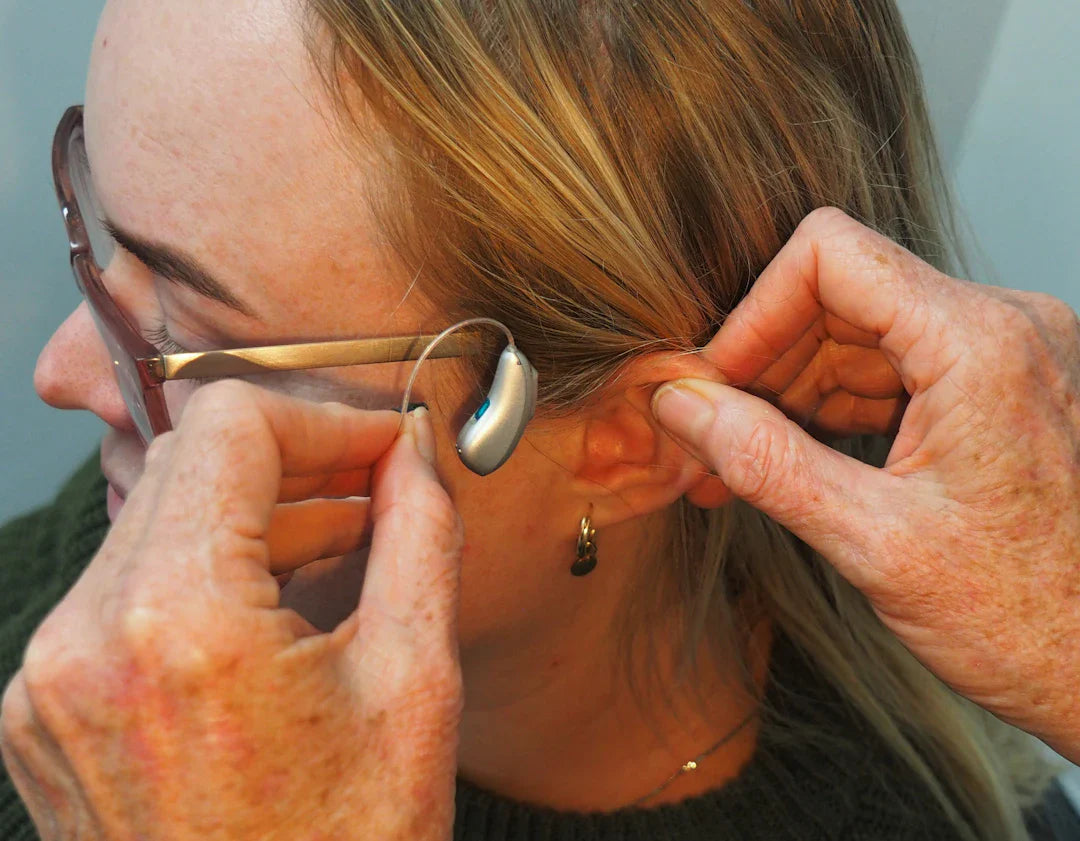Living with hearing loss can be challenging, but with the advancements in technology, there are now various types of hearing aids that can help improve your quality of life. This article will dive into the different types of hearing aids available and their features to help you make an informed decision about which one is best for you.
In-The-Ear (ITE) Hearing Aids
In-the-ear (ITE) hearing aids are custom-made to fit inside the outer ear. These hearing aids are suitable for individuals with mild to severe hearing loss. They are discreet and easy to handle, making them a popular choice for many.
Features:
- Custom-made for a perfect fit.
- Small and discreet.
- Easy to handle and adjust.
- Good sound quality.
Behind-The-Ear (BTE) Hearing Aids
Behind-the-ear (BTE) hearing aids are worn behind the ear, with a small tube or wire connecting to a custom earpiece inside the ear. BTE hearing aids are suitable for individuals with mild to profound hearing loss, as they can amplify sound effectively.
Features:
- Durable and reliable.
- Fits a wide range of hearing loss.
- Comfortable to wear.
- Easy to clean and maintain.
In-The-Canal (ITC) Hearing Aids
In-the-canal (ITC) hearing aids are custom-made to fit partially in the ear canal. They are smaller than BTE and ITE hearing aids, providing a discreet option with improved sound quality compared to completely-in-the-canal (CIC) hearing aids.
Features:
- Discreet and nearly invisible.
- Improved sound quality.
- Easy to handle and adjust.
Receiver-In-The-Ear (RITE) Hearing Aids
Receiver-in-the-ear (RITE) hearing aids are similar to BTE hearing aids but with the speaker or receiver placed inside the ear canal. RITE hearing aids are suitable for individuals with mild to moderate hearing loss and offer a more natural sound experience.
Features:
- Natural sound quality.
- Discreet and comfortable.
- Easy to use and adjust.
- Less feedback and occlusion effect.
Completely-In-The-Canal (CIC) Hearing Aids
Completely-in-the-canal (CIC) hearing aids are the smallest hearing aids available. They are custom-made to fit deep inside the ear canal, making them almost invisible to others. CIC hearing aids are suitable for individuals with mild to moderate hearing loss.
Features:
- Virtually invisible when worn.
- Enhances sound quality in noisy environments.
- Reduced wind noise.
Open Fit Hearing Aids
Open fit hearing aids are a variation of BTE hearing aids. They are smaller and do not fully block the ear canal, allowing for natural sound to pass through. Open fit hearing aids are suitable for individuals with mild to moderate high-frequency hearing loss.
Features:
- Discreet and comfortable.
- Allows natural sound to pass through.
- Reduces occlusion effect.
Choosing the Right Hearing Aid
Now that you are familiar with the different types of hearing aids and their features, how do you choose the right one for you? It is crucial to consider your specific hearing needs, as well as factors such as your lifestyle, dexterity, and personal preference.
Consulting with an audiologist is highly recommended to determine the extent of your hearing loss and the most suitable hearing aids for your individual needs. Audiologists can conduct hearing assessments and provide expert guidance on the best options available.
Additionally, it is essential to research the reputation and expertise of the hearing aid manufacturer or supplier. Look for reviews, testimonials, and certifications to ensure you are purchasing from a reliable and reputable source.
The Importance of Earwax Removal
Proper earwax removal is an essential aspect of maintaining the functionality and performance of your hearing aids. It is important to keep your ears clean and free from excessive earwax buildup, as it can negatively impact the effectiveness of your hearing aids.
While it is tempting to clean your ears using cotton swabs or other objects, this can push the earwax further into the ear canal, potentially causing harm or impacting your hearing. Consult with a healthcare professional or audiologist for safe and effective earwax removal methods to ensure optimal hearing aid performance.
Dealing with Tinnitus
Tinnitus is a common condition characterised by the perception of ringing or buzzing sounds in the ears. While hearing aids cannot cure tinnitus, they can help mask the symptoms and improve overall hearing.
Hearing aids with tinnitus maskers or sound therapy features can provide relief by playing soothing sounds to distract from the tinnitus noise. Consult with your audiologist to explore hearing aid options specifically designed to address tinnitus.
The Role of Audiology
Audiology plays a vital role in managing hearing loss and ensuring the proper fitting and functioning of hearing aids. Audiologists are highly trained professionals who specialise in the diagnosis and treatment of hearing disorders.
Regular visits to an audiologist are necessary to monitor your hearing health, make necessary adjustments to your hearing aids, and address any concerns or issues you may have. They can also provide valuable advice on hearing protection and strategies to improve communication.
Conclusion: Rediscovering Sound with the Right Hearing Aids
Living with hearing loss can be challenging, but with the right hearing aids, you can rediscover the joy of sound. By understanding the different types of hearing aids available and their features, consulting with an audiologist, and practicing proper earwax removal, you can make an informed decision and enhance your hearing experience.
Remember to prioritise your hearing health and seek professional advice to ensure you select the most appropriate hearing aids for your needs. Embrace the opportunities that well-fitted hearing aids provide and embrace a world full of sounds.




